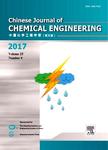CFD based extraction column design-Chances and challenges
CFD based extraction column design——Chances and challenges作者机构:Chair of Separation Science and TechnologyPOB 3049TU KaiserslauternKaiserslautern 67653Germany Center for Computational and Mathematical Modelling(CM2)TU KaiserslauternKaiserslautern 67653Germany University of JordanDepartment of Chemical Engineering11942 AmmanJordan
出 版 物:《Chinese Journal of Chemical Engineering》 (中国化学工程学报(英文版))
年 卷 期:2016年第24卷第2期
页 面:259-263页
核心收录:
学科分类:0710[理学-生物学] 080706[工学-化工过程机械] 0830[工学-环境科学与工程(可授工学、理学、农学学位)] 081704[工学-应用化学] 0817[工学-化学工程与技术] 08[工学] 0807[工学-动力工程及工程热物理] 081701[工学-化学工程] 0703[理学-化学]
主 题:CFD DPBM Column design
摘 要:This paper shows that one-dimensional (I-D) [and three-dimensional (3-D) computational fluid dynamics (CFD)] simulations can replace the state-of-the-art usage of pseudo-homogeneous dispersion or back mixing models. This is based on standardized lab-scale cell experiments for the determination of droplet rise, breakage, coalescence and mass transfer parameters in addition to a limited number of additional mini-plant experiments with original fluids. Alternatively, the hydrodynamic parameters can also be derived using more sophisticated 3- D CFD simulations. Computational 1-D modeling served as a basis to replace pilot-plant experiments in any column geometry. The combination of 3-D CFD simulations with droplet population balance models (DPBM) increased the accuracy of the hydrodynamic simulations and gave information about the local droplet size. The high computational costs can be reduced by open source CFD codes when using a flexible mesh generation. First combined simulations using a three way coupled CFD/DPBM/mass-transfer solver pave the way for a safer design of industrial-sized columns, where no correlations are available.



